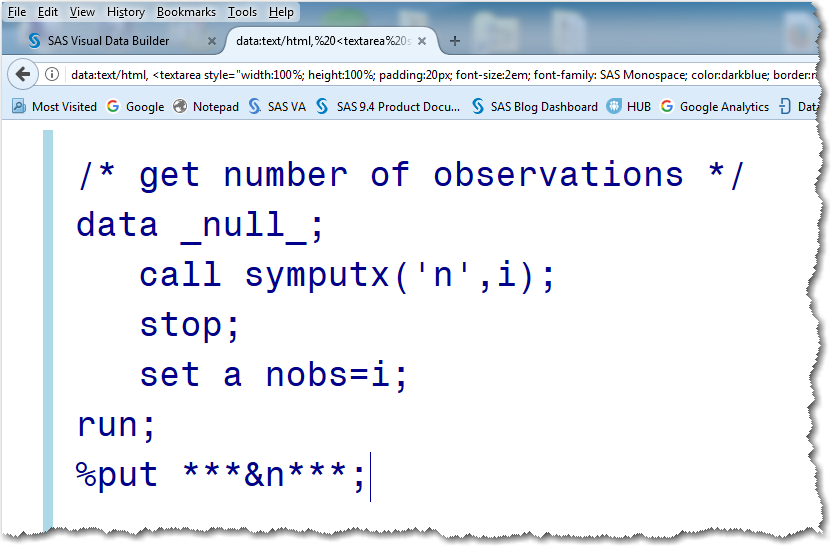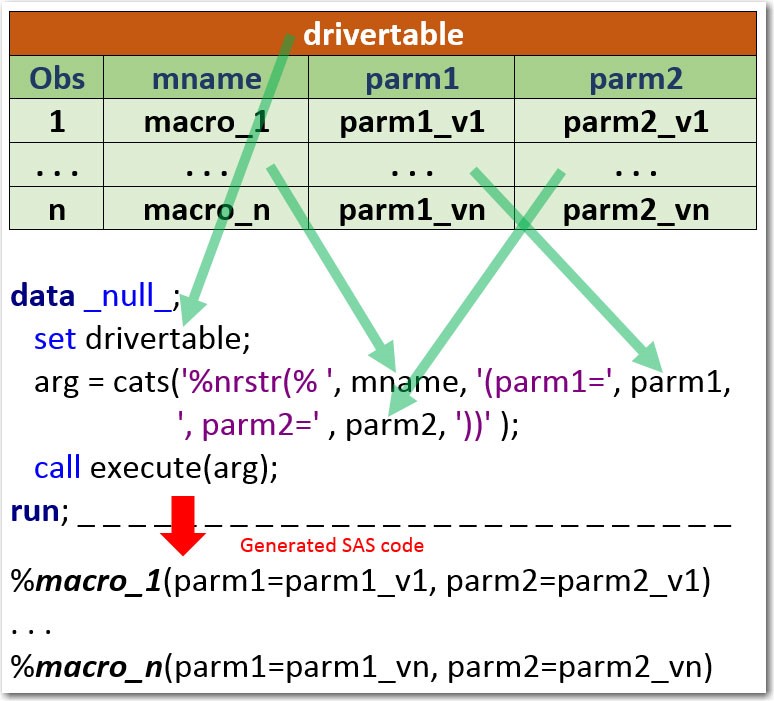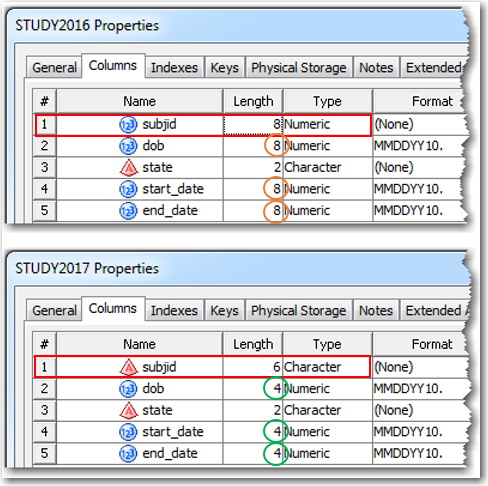
SAS' Leonid Batkhan shows you how to automate creation of SAS variable labels so tables and reports are easier to read.

SAS' Leonid Batkhan shows you how to automate creation of SAS variable labels so tables and reports are easier to read.

This blog post demonstrates process and SAS coding techniques to shift dates by a given number of workdays accounting for weekends and holidays.

SAS' Leonid Batkhan shows you how to compare SAS data sets that include common and uncommon columns. You'll learn how to check mark commonalities and color-code differences in data tables side-by-side columns and add a comments field to see greater detail.

Leonid Batkhan shows you easy ways to create a checklist table in SAS software.

Just when you think you’ve seen it all, life can surprise you in a big way, making you wonder what else you've missed. That is what happened when I recently had a chance to work with the SAS® Scalable Performance Data Server, a product that's been around a while, but

Have you ever thought of selling sand on the beach? Neither have I. To most people the mere idea is preposterous. But isn’t it how all great discoveries, inventions and breakthroughs are made? Someone comes up with an outwardly crazy, outlandish idea, and despite all the skepticism, criticism, ostracism, ridicule

Have you ever tried to pass comma-delimited values to SAS macro or to a SAS macro function? How can SAS distinguish commas separating parameters or arguments from commas separating parts of the values? Passing comma-delimited value as an argument to a SAS macro function Let’s say you want to extract

"There's a way to do it better - find it." - Thomas A. Edison When it comes to SAS coding, this quote by Thomas A. Edison is my best advisor. Time permitting, I love finding better ways of implementing SAS code. But what code feature means “better” – brevity, clarity

To those of you who have not read my previous post, Dividing by zero with SAS, it's not too late to go back and make it up. You missed a lot of fun, deep thought and opportunity to solve an unusual SAS coding challenge. For those who have already read

Whether you are a strong believer in the power of dividing by zero, agnostic, undecided, a supporter, denier or anything in between and beyond, this blog post will bring all to a common denominator. History of injustice For how many years have you been told that you cannot divide by

In automated production (or business operations) environments, we often run SAS job flows in batch mode and on schedule. SAS job flow is a collection of several inter-dependent SAS programs executed as a single process. In my earlier posts, Running SAS programs in batch under Unix/Linux and Let SAS write

Recently, I worked on a cybersecurity project that entailed processing a staggering number of raw text files about web traffic. Millions of rows had to be read and parsed to extract variable values. The problem was complicated by the varying records composition. Each external raw file was a collection of

My New Year's resolution: “Unclutter your life” and I hope this post will help you do the same. Here I share with you a data preparation approach and SAS coding technique that will significantly simplify, unclutter and streamline your SAS programming life by using data templates. Dictionary.com defines template as

SAS batch jobs can generate many log files that accumulate over time. In this post, we present a SAS program that cleans up old log files on your system.

It is imperative for developers, whether hardware or software engineers, to foresee unintended (probable or improbable) system usages and implement features that will make their creations foolproof, that is protected from misuse. Learn more about developing foolproof solutions with this old Russian anecdote.

The European Union’s General Data Protection Regulation (GDPR) taking effect on 25 May 2018 pertains not only to organizations located within the EU; it applies to all companies processing and holding the personal data of data subjects residing in the European Union, regardless of the company’s location. Here are four selected SAS tools for GDPR that allow you to protect personal data in SAS reports by suppressing counts in small demographic group reports.

Inspired by curiosity and backed by the most powerful analytics in the world, SAS discovers a new planet in our Solar system. See how we used SAS Viya to make this historic discovery.

If Necessity is the mother of Invention, then, perhaps, the father of Automation is Laziness. Automation is all about convenience, comfort, and productivity. Why do it yourself if you can devise something to do it for you! In my previous post Running SAS programs in batch under Unix/Linux, we learned

While SAS program development is usually done in an interactive SAS environment (SAS Enterprise Guide, SAS Display Manager, SAS Studio, etc.), when it comes to running SAS programs in a production or operations environment, it is routinely done in batch mode. Why run SAS programs in batch mode? First and

The purpose of this blog post is to demonstrate a SAS coding technique that allows for calculations with multiple variables and multiple observations across a SAS dataset. This technique can be useful for working with time series, clinical trials, - in any data step calculations involving values from different observations.

“The difference between style and fashion is quality.” -Giorgio Armani With an out-of-the-box SAS Enterprise Guide (EG) installation, when you build a report in SAS EG it is displayed in a nice-looking default style. If you like it, you can keep it, and continue reading. If you don’t quite

Whether you are a SAS code creator, a blogger, a technical writer, an editor-in-chief, an executive, a secretary, a developer or programmer in any programming language or simply someone who uses computer or hand-held device for writing, you need to read this blog post – your life is about to

In my prior posts (Data-driven SAS macro loops, Modifying variable attributes in all datasets of a SAS library, Automating the loading of multiple database tables into SAS tables), I presented various data-driven applications using SAS macro loops. However, macro loops are not the only tools available in SAS for developing

The ancient political maxim “divide and conquer” (Lat. “dīvide et īmpera”) has been used for millennia in politics, sociology, and psychology, mainly to manipulate people. In the last two centuries, however, this principle has also been adopted by computer science. It is widely used in computer programming, primarily in computer

When developing SAS applications, you can feed database tables into your application by using the libname access engine either by directly referring a database table, or via SAS or database views that themselves refer to one or more of the database tables. More on Automation with SAS: Let SAS write

Even if you are a traditional SAS programmer and have nothing to do with cybersecurity, you still probably have to deal with this issue in your day-to-day work. The world has changed, and what you do as a SAS programmer is not just between you and your computer anymore. However,

The full text of Fermat's statement, written in Latin, reads "Cubum autem in duos cubos, aut quadrato-quadratum in duos quadrato-quadratos, et generaliter nullam in infinitum ultra quadratum potestatem in duos eiusdem nominis fas est dividere cuius rei demonstrationem mirabilem sane detexi. Hanc marginis exiguitas non caperet." The English translation is:

There is a well-known Russian saying that goes “Если нельзя, но очень хочется, то можно.” The English translation of it can span anywhere from “If you can’t, but want it badly, then you can” to “If you shouldn’t, but want it badly, then you should” to “If you may not,

Small matters matter. Imagine saving (or spending wisely) just 1 second of your time every hour. One measly second! During your lifespan you would save or spend wisely (1 sec-an-hour * 24 hours-a-day * 365 days-a-year * 100 years) / (3600 seconds-an-hour * 24 hours-a-day) = 10 days, a whole

Imagine making $50K a day out of thin air. Did you know that NASDAQ routinely processes around 10,000,000 trades a day? What if instead of rounding cents for each transaction, market makers truncated fractions of cents in the amount they owe you? Under the assumption that each transaction, on average,